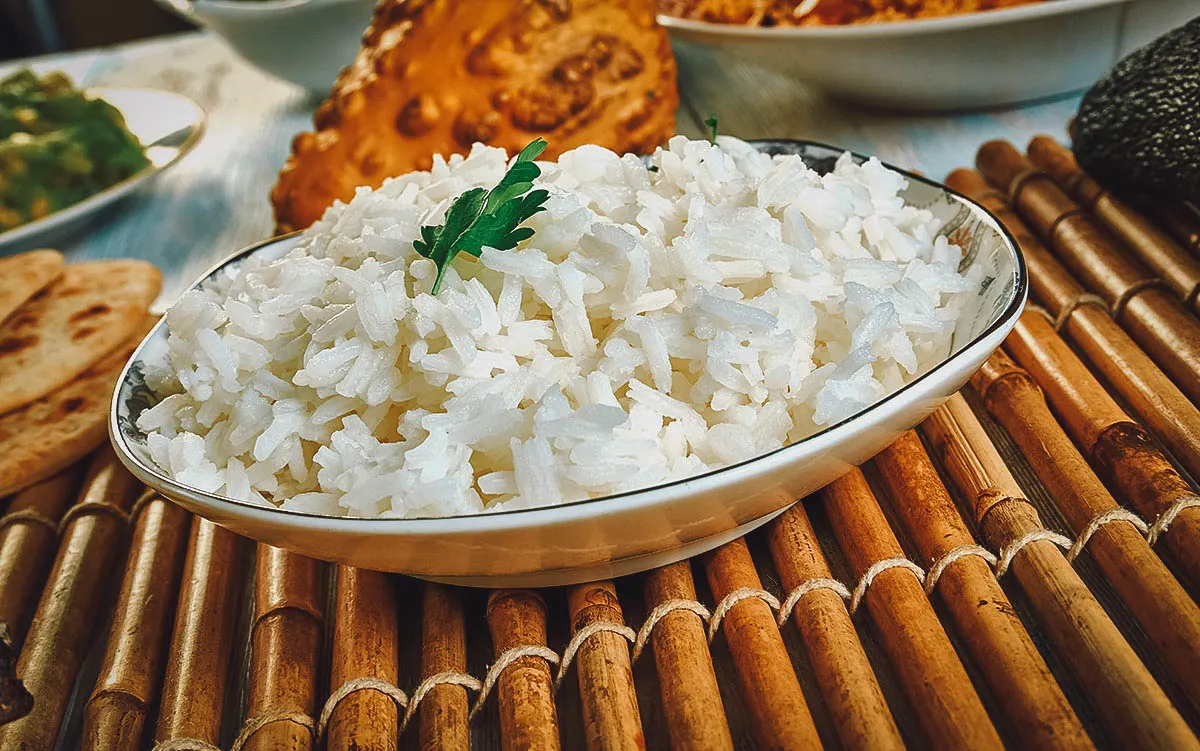Introduction: Kenyan Cuisine Overview
Kenyan cuisine is a diverse and flavorful fusion of African, Indian, and European influences. The country’s cuisine is characterized by a variety of spices, herbs, and fresh ingredients that result in a unique and delicious array of dishes. Kenyan foods are typically hearty and filling, with a focus on starchy vegetables like maize, potatoes, and cassava, along with meats like beef, goat, and chicken.
Common Ingredients in Kenyan Cuisine
Kenyan cuisine relies heavily on spices and herbs, including coriander, ginger, garlic, cumin, and turmeric. The use of fresh ingredients like tomatoes, onions, and chilies are also common in many Kenyan dishes, adding a burst of flavor and color to the cuisine. Grains like maize and rice are staple ingredients in many Kenyan dishes, while meats like beef, goat, and chicken are popular protein sources. Other common ingredients in Kenyan cuisine include beans, lentils, peanuts, and coconut milk.
Religious and Cultural Dietary Restrictions
Religion and culture play a significant role in shaping dietary practices in Kenya. For instance, many Kenyan Muslims abstain from pork and alcohol, while Hindus do not consume beef. Additionally, some ethnic communities like the Maasai and Samburu have traditionally relied on a meat-based diet due to their pastoralist lifestyle. In contrast, other communities like the Luo and Luhya have a more plant-based diet due to the availability of fruits and vegetables in their regions.
Health Considerations in Kenyan Foods
Kenyan cuisine can be high in calories and fat, which may contribute to health problems like obesity and heart disease. However, many traditional Kenyan dishes like ugali, sukuma wiki, and mukimo are nutritious and filling, providing a balance of macronutrients and micronutrients. To make Kenyan cuisine healthier, people can incorporate more plant-based ingredients like vegetables, beans, and lentils into their meals. Additionally, reducing portion sizes and using healthy cooking methods like baking, grilling, or steaming can help to lower the calorie and fat content of dishes.
Vegetarian and Plant-based Options
Vegetarian and plant-based options are widely available in Kenyan cuisine, especially in urban areas. Dishes like githeri (a stew of beans and maize), sukuma wiki (collard greens), and chapati (an Indian-style flatbread) are all vegetarian-friendly and provide a good source of protein and fiber. Additionally, many Kenyan restaurants and food vendors offer vegetarian versions of classic dishes like pilau, samosas, and biryani, making it easier for vegetarians and vegans to enjoy traditional Kenyan cuisine.
Conclusion: Embracing Diversity in Kenyan Cuisine
Kenyan cuisine is a vibrant and flavorful mix of cultures and traditions, reflecting the country’s rich history and diverse population. Despite religious and cultural dietary restrictions, Kenyan cuisine offers a wide range of options for people with different dietary needs and preferences. By incorporating more plant-based ingredients and reducing portion sizes, people can enjoy the health benefits of Kenyan cuisine while savoring its unique flavors and textures. Regardless of dietary restrictions, Kenyan cuisine is a testament to the beauty and diversity of the country’s food culture.

